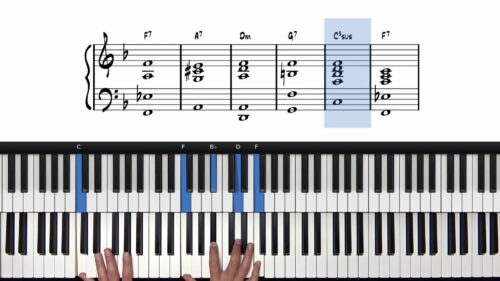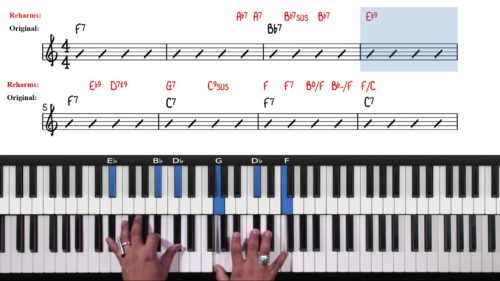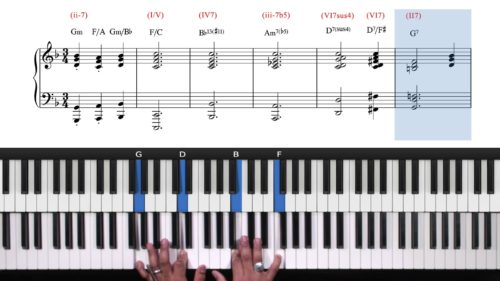Gospel 1625 Progressions
Welcome to this lesson where we delve into some more advanced harmonic variations for the final line of the blues. These substitutions build upon concepts we’ve covered earlier, particularly the gospel walk-down, adding an additional layer of complexity and richness to your slow blues playing.
Gospel Walk-down Examples
The gospel walk-down, introduced in a previous lesson, is a useful element in blues harmony, especially when used the 8th bar of the 12 bar blues. Typically, this walk-down progresses from a minor chord to a C over G, then to F major, and finally to F# diminished 7.

In earlier lessons, we transitioned from a D7 to a G9 at the beginning of the final line (9th bar). However, this lesson introduces a new variation: transitioning into a 1-6-2-5 progression to enhance the harmonic depth of the final line of the blues.
Understanding the 1-6-2-5 Progression
To fully understand this harmonic substitution, we first break down the 1-6-2-5 progression in the key of C major:
- 1 Chord (C): The tonic chord.
- 6 Chord (A7 or A9): Often altered with extensions like a sharp 5.
- 2 Chord (D minor or D7): Can be played as a D9 or D7.
- 5 Chord (G dominant): This can vary from a G7 to a G9sus, depending on the desired tension.

This progression is not only a staple in jazz but also in gospel and blues, providing smooth and rich harmonic movement that can be embellished with chord alterations such as A7#5, and also melodic embellishment such as blues scales and octaves.
Applying the 1-6-2-5 Progression
When implementing this variation, you can experiment with different chord voicings and extensions:
- Start with a C major chord.
- Transition to an A7 (consider sharping the 5th for added tension).
- Move to a D9 or even a D7 voicing can work perfectly fine.
- Conclude with a G7 or G9sus that leads us back to the tonic C.
These substitutions offer a smoother and more nuanced transition leading back to the tonic, adding sophistication to your blues performance.
Gospel Blues Walk-down & Slash Chords
After integrating the 1-6-2-5 progression, it’s crucial to understand the role of each chord. For example, the C over G acts as a tonic with a suspended bass, creating an elegant descending bass line to the next chord in the sequence.

You can also experiment with stride patterns, rolling chords, and chromatic movements to enhance the walk-down, as demonstrated in the video.
Gospel Blues Turnaround Techniques
To solidify these concepts, practice incorporating these variations into a complete blues performance. Pay particular attention to the turnaround, where you can use octave jumps, chromatic movements, and upper structure triads for a strong resolution.

Visualize the C triad and its inversions to guide your hand movements and voicings, ensuring a smooth and confident performance.
Lesson Downloads
-
Blues Substitutions In C File Type: pdf
Practice Tips
-
Master the 1-6-2-5 Progression: Practice the progression in different keys, focusing on smooth transitions and chord extensions.
-
Experiment with Voicings: Try different voicings and alterations, especially with the A7 and D9 chords, to discover which sounds resonate best with your style.
-
Incorporate Stride Patterns: Use stride bass patterns to add rhythmic variation and to establish a steady pulse during the walkdown.
-
Focus on Turnarounds: Experiment with different turnaround techniques, such as octave jumps and chromatic movement, to add flair to your blues endings.
-
Internalize the Rhythm: Practice playing with both a strict rhythmic structure and a more fluid, free-form approach to enhance your timing and phrasing.







